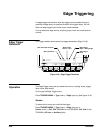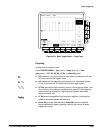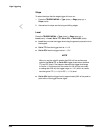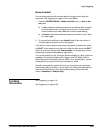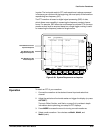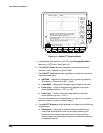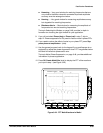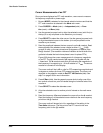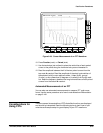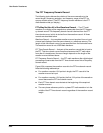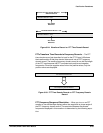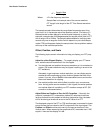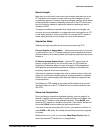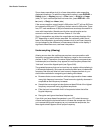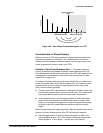
Fast Fourier Transforms
Reference
3Ć40
Cursor Measurements of an FFT
Once you have displayed an FFT math waveform, use cursors to measure
its frequency amplitude or phase angle.
1. Be sure MORE is selected in the channel selection buttons and that the
FFT math waveform is selected in the More main menu.
2. Press CURSOR ➞ Mode (main) ➞ Independent (side) ➞ FuncĆ
tion (main) ➞ H Bars (side).
3. Use the general purpose knob to align the selected cursor (solid line) to
the top (or to any amplitude on the waveform you choose).
4. Press SELECT to select the other cursor. Use the general purpose knob
to align the selected cursor to the bottom (or to any amplitude on the
waveform you choose).
5. Read the amplitude between the two cursors from the D: readout. Read
the amplitude of the selected cursor relative to either 1 V
RMS
(0 dB),
ground (0 volts), or the zero phase level (0 degrees or 0 radians) from
the @: readout. (The waveform reference indicator at the left side of the
graticule indicates the level where phase is zero for phase FFTs.)
Figure 3Ć23 shows the cursor measurement of a frequency magnitude
on an FFT. The @: readout reads 0 dB because it is aligned with the
1 V
RMS
level. The D: readout reads 24.4 dB indicating the magnitude of
the frequency it is measuring is -24.4 dB relative to 1 V
RMS
. The source
waveform is turned off in the display.
The cursor units will be in dB or volts for FFTs measuring magnitude and
in degrees or radians for those FFTs measuring phase. The cursor unit
depends on the selection made for Set FFT Vert Scale to (side). See
step 7 on page 3Ć38 for more information.
6. Press V Bars (side). Use the general purpose knob to align one of the
two vertical cursors to a point of interest along the horizontal axis of the
waveform.
7. Press SELECT to select the alternate cursor.
8. Align the selected cursor to another point of interest on the math waveĆ
form.
9. Read the frequency difference between the cursors from the D: readout.
Read the frequency of the selected cursor relative to the zero frequency
point from the @: readout.
The cursor units will always be in Hz, regardless of the setting in the
Time Units side menu. The first point of the FFT record is the zero
frequency point for the @: readout.



